Flowers are an amazing way to cheer up any space – whether you are looking to boost the appearance of your home with a selection of cut blooms and floral arrangements, or transform the outdoor space of your garden or yard with a series of colorful blooms, there is a flower for almost any occasion.

Choosing the right flowers can also play a key role in helping you to create a wildlife oasis, and attract bees, butterflies and other insects to your home – this can also be great for biodiversity and retaining balanced ecosystems.
Sky blue flowers are an amazing chance to add a touch of color to any space, and their brighter color is super appealing for insects, allowing you to enjoy your new flowers while still doing your part for the planet.
1. Cornflower
Botanical Name: Centaurea cyanus
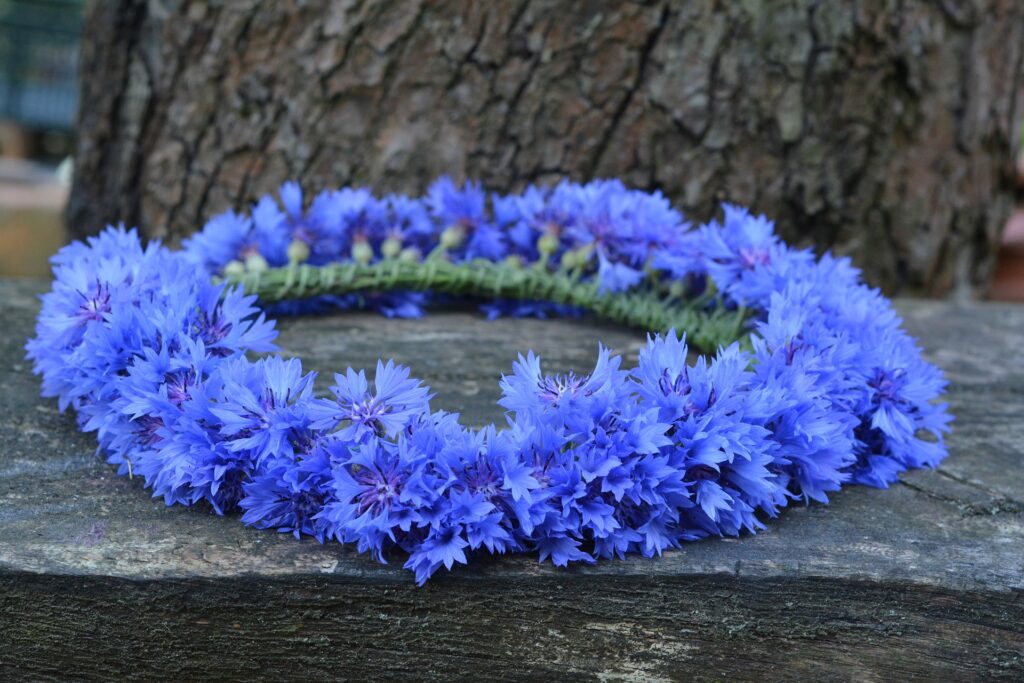
Cornflowers have long been a popular flower, and the sky blue blooms are just what you need for attracting all manner of bees and butterflies to create a wildlife oasis. Keep the soil well-drained and your plants in full sun for optimum results.
Don’t forget to have your seeds in place outside by the early spring or fall to give your cornflower the best chance.
2. Globe Thistle
Botanical Name: Echinops ritro
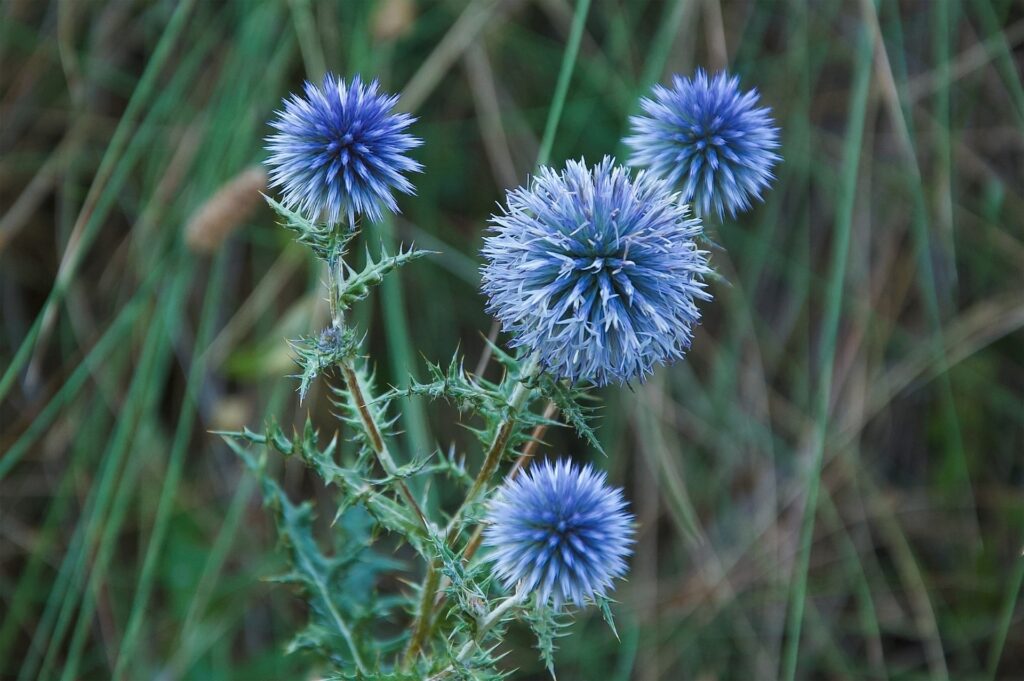
This distinctive-looking plant gets its name from a unique, globe-like shape and prickly green leaves. The rounded heads can range from a bright, sky blue all the way up to a dark, moody violet shade, and do well in well-drained soil, full sun or partial shade, and with regular pruning to remove deadheads.
3. Iris
Botanical Name: Iris sibirica
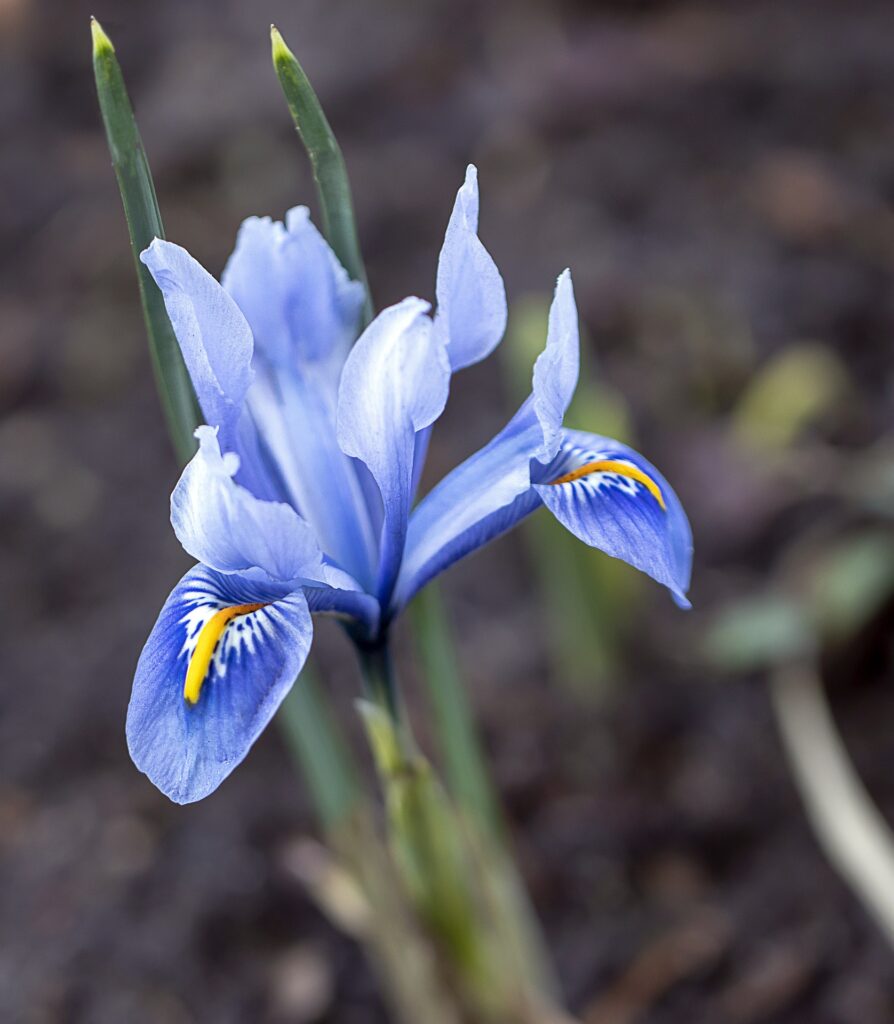
Another floral favorite, the showy, stunning sky blue flowers of an Iris flower appear in May and can be enjoyed well into June with their grass-like leaves. They are pretty low maintenance and, once matured, they look stunning left in their natural origins, or when cut and arranged in delicate displays and arrangements.
Keep the soil moist, add plenty of sunlight and partial shade, and, for the best results, plant near a stream or water source for stunning blooms.
4. Hydrangea
Botanical Name: Hydrangea macrophylla
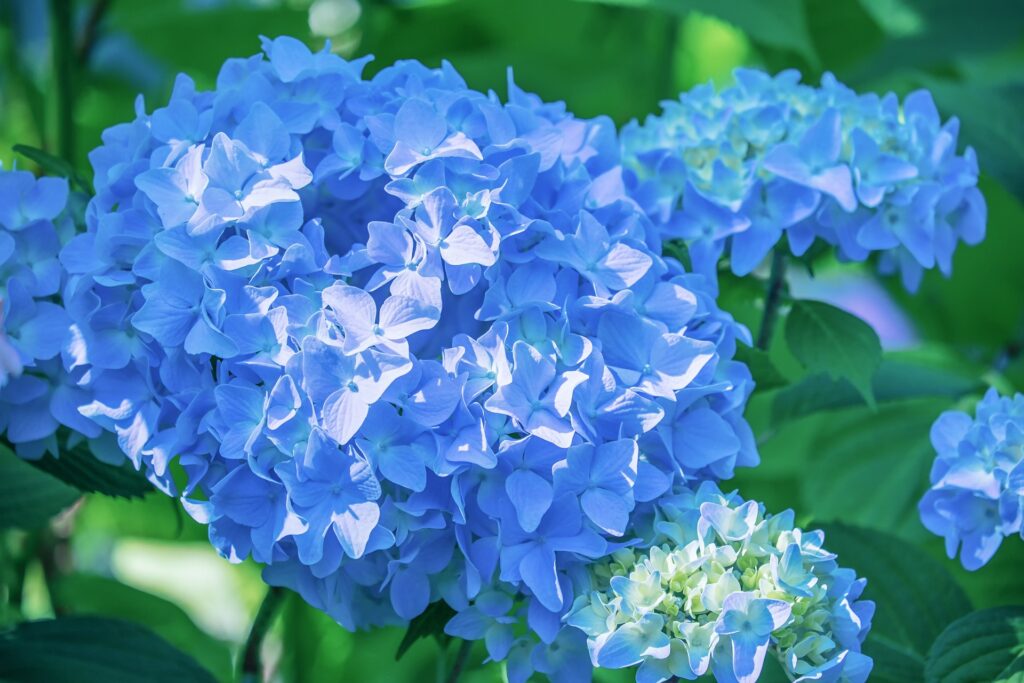
With sunny, sky blue flowers, a humble hydrangea is an ideal way to brighten up your garden and bring any outside space to life. The large heads are made up of many slightly smaller flowers, and the end result is a stunning display of sky-blue beauty.
RELATED: 12 Beautiful Flowers That Start With H (Including Pictures)
For best results, keep the soil moist and well-drained, add partial shade, and boost the acidity of the soil for a clearer, brighter blue.
5. Empire Butterfly Bush
Botanical Name: Buddleia davidii

As the name suggests, this is a must-have if you are keen to attract butterflies to your garden; they adore the arching branches and lance-shaped leaves, as well as well-drained soil and full shrubs. As an added bonus, they are also appealing to hummingbirds!
6. Oxford Blue
Botanical Name: Eryngium bourgatii
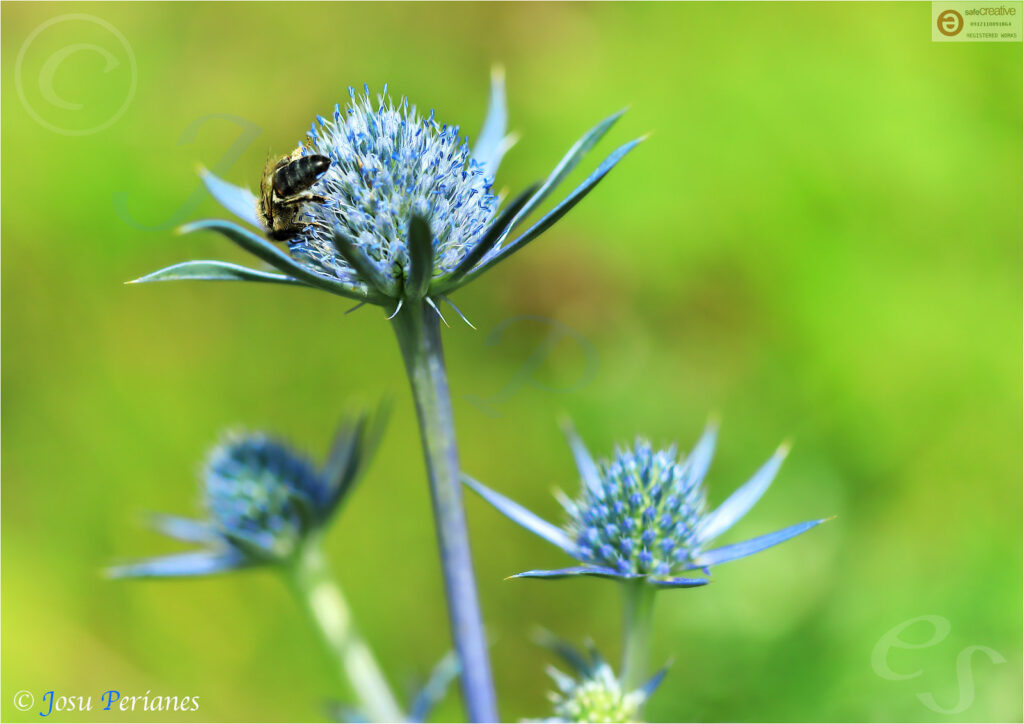
The distinctive Oxford Blue blooms come with white veins for stunning contrast, and the cone-shaped flowers range from dark, deep blue to lighter tones.
Use dry, well-drained soil and full sun for best results. Be aware that while this is a great plant for birds, butterflies and bees, parts can be poisonous to humans if ingested.
7. Blue Delphiniums
Botanical Name: Delphinium

Ideal for adding that finishing touch to your dream cottage garden, delphiniums are tough and hardy, and look amazing when arranged into cut floral displays. Keep soil well-drained, and make sure your delphiniums get plenty of sunlight to retain that bright blue glow.
8. Periwinkle
Botanical Name: Corydalis flexuosa
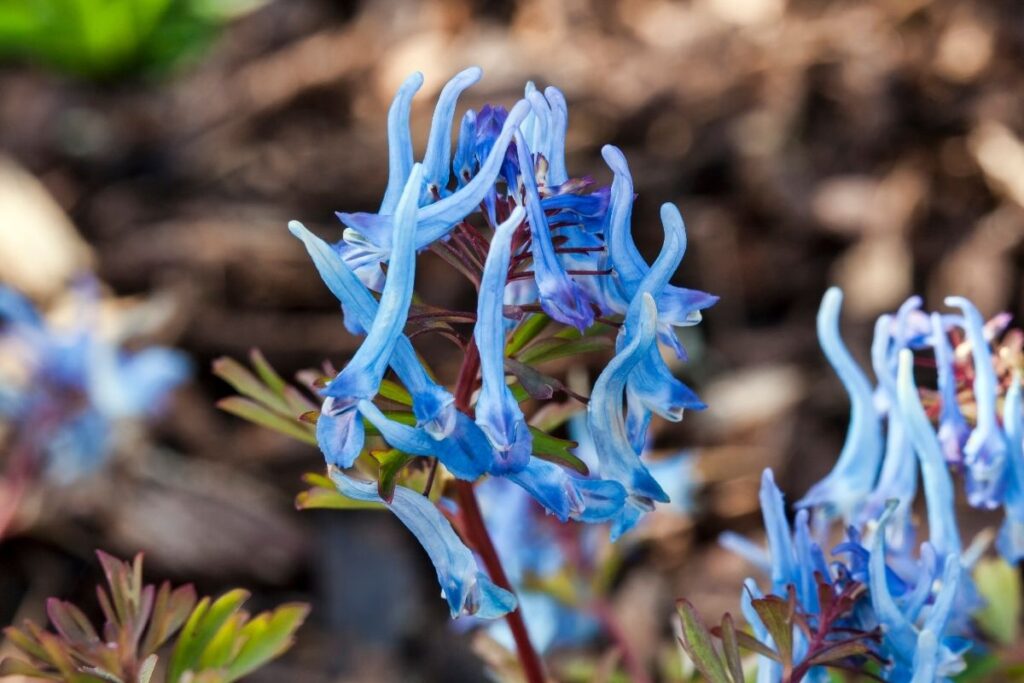
The periwinkle is a stunning flower with a rich literary and mythological history, and the tiny flowers come with the most amazing scent. Partial shade is needed to show these plants off to their full advantage, along with well-drained soil. Once established, these blooms are drought resistant!
RELATED: 16 Beautiful Periwinkle Flowers (Including Pictures)
9. Forget-Me-Nots
Botanical Name: Myosotis scorpioides
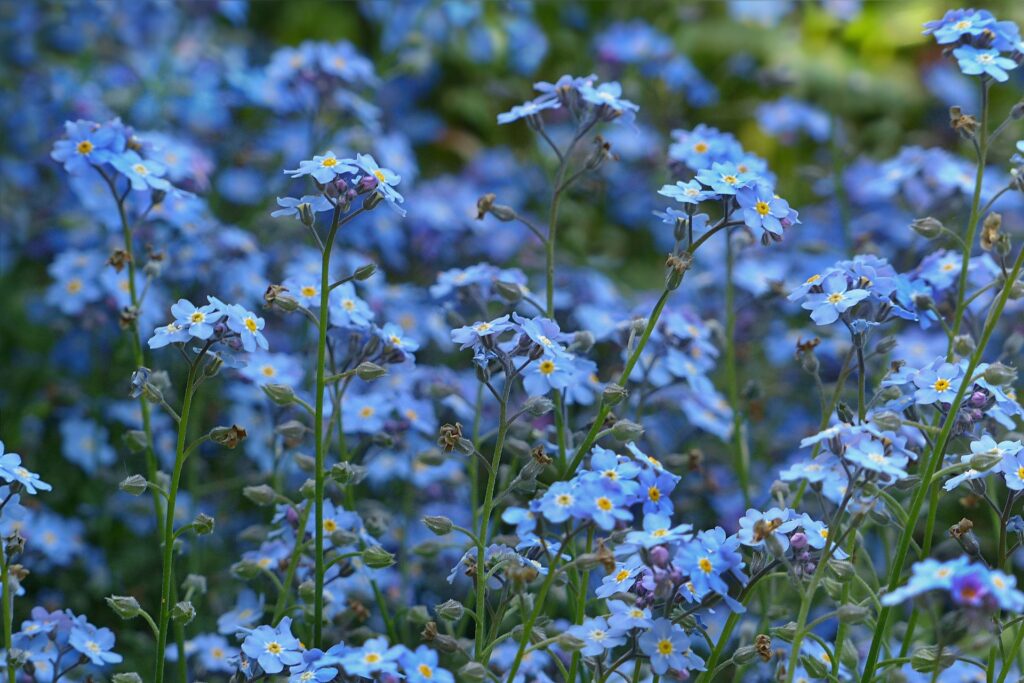
Once shared as a token of affection between lovers, the sky blue flowers of forget-me-nots hold a special place in the hearts of many, and have the added bonus of being super low maintenance. Just make sure that you have well-drained but moist soil, and a little shade for them to grow in.
10. Spring Gentians
Botanical Name: Gentiana verna
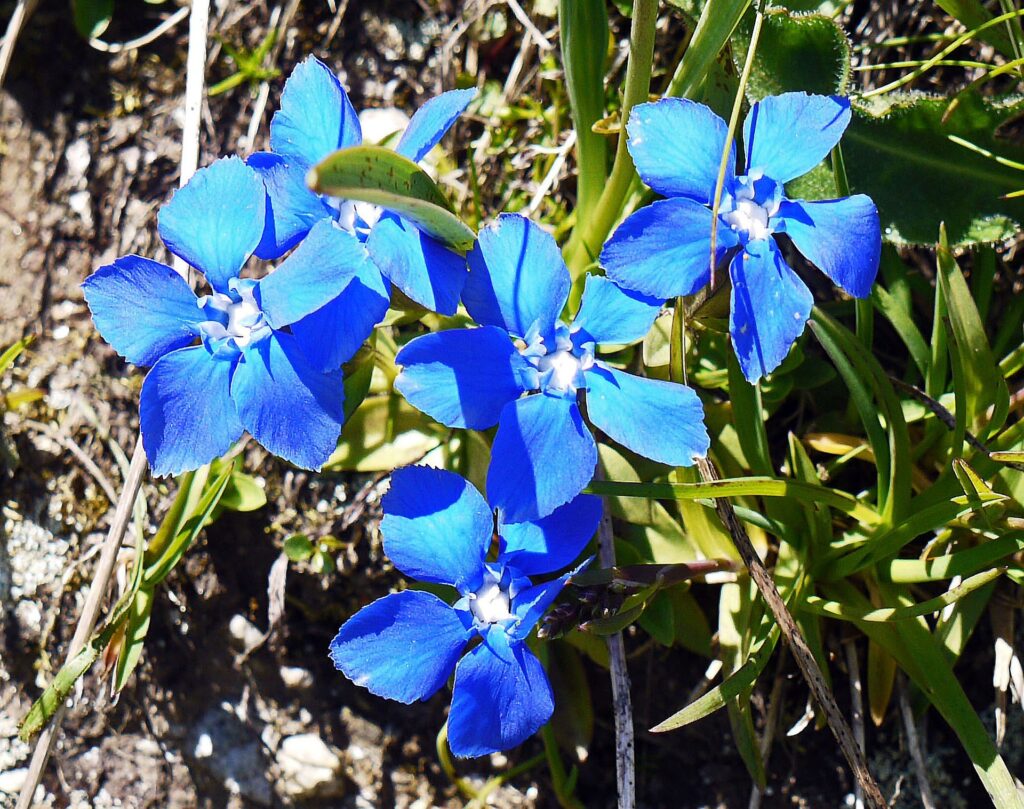
An alpine flower, Gentiana verna will bloom with a strong, intense blue shade, and is a hardy plant perfect for cooler areas or snowy inclines. Keep soil moist, and allow a little sun.
11. Perennial Geranium
Botanical Name: Geranium
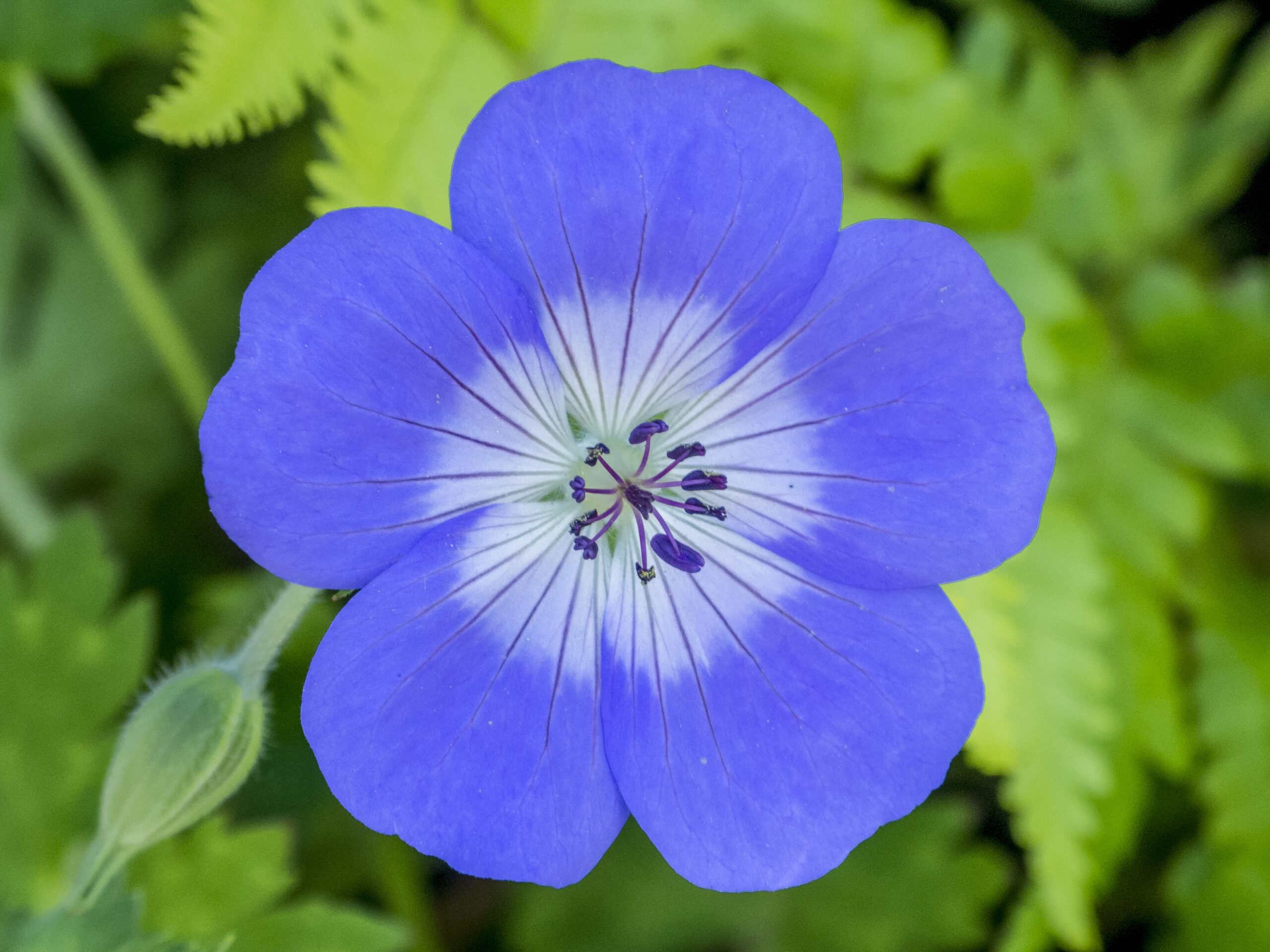
Fill your garden with wondrous colors when you plant a selection of geranium flowers – colors range from a bright white to a sky blue, and all the way up to a deep, rich navy. You can enjoy stunning petals from June right through to the frosts as long as you keep plenty of sunlight and moist, well-drained soil.
12. Brunnera
Botanical Name: Brunnera macrophylla
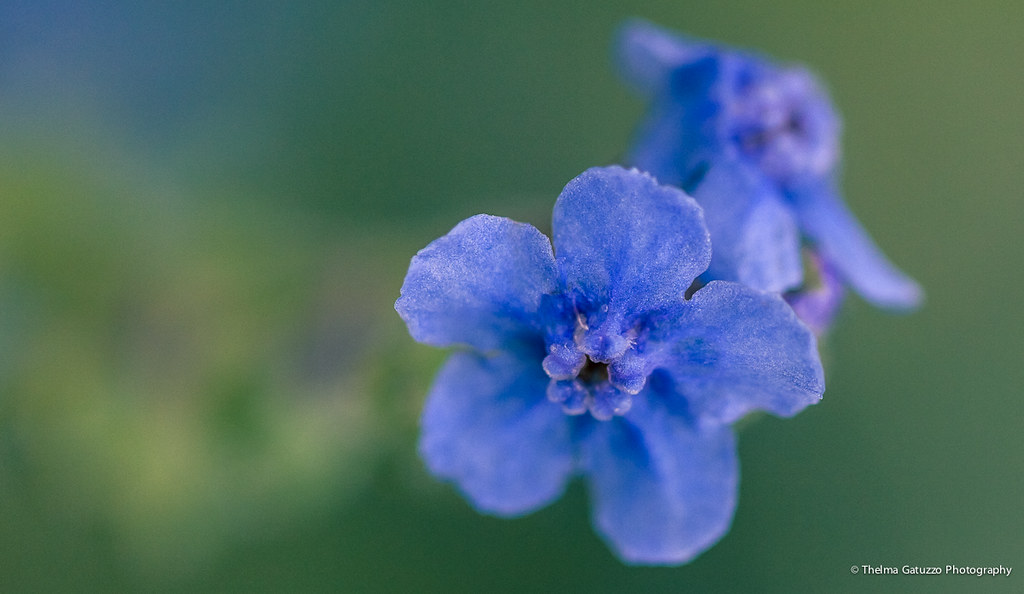
If you have a shady garden and despair that you will never get anything to grow, have no fear: a Brunerra plant is exactly what you need. Shaded gardens tend to come with the ideal moist soil, allowing you to enjoy sky blue flowers all through the spring months.
13. Grape Hyacinth
Botanical Name: Muscari
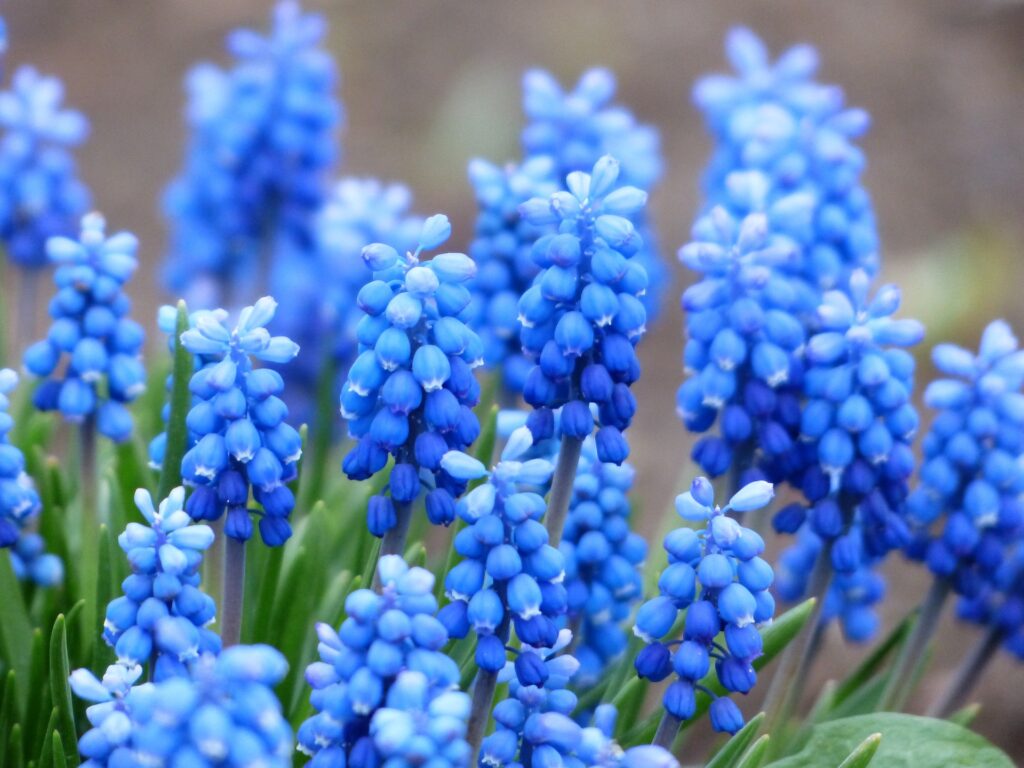
Hyacinths have long been a popular floral choice, and it is easy to see why with delicate blue petals and bundles of gorgeous blossoms. If you have well-drained soil and enough sun, this bloom looks stunning when paired with daffodils.
14. Clematis
Botanical Name: Clematis
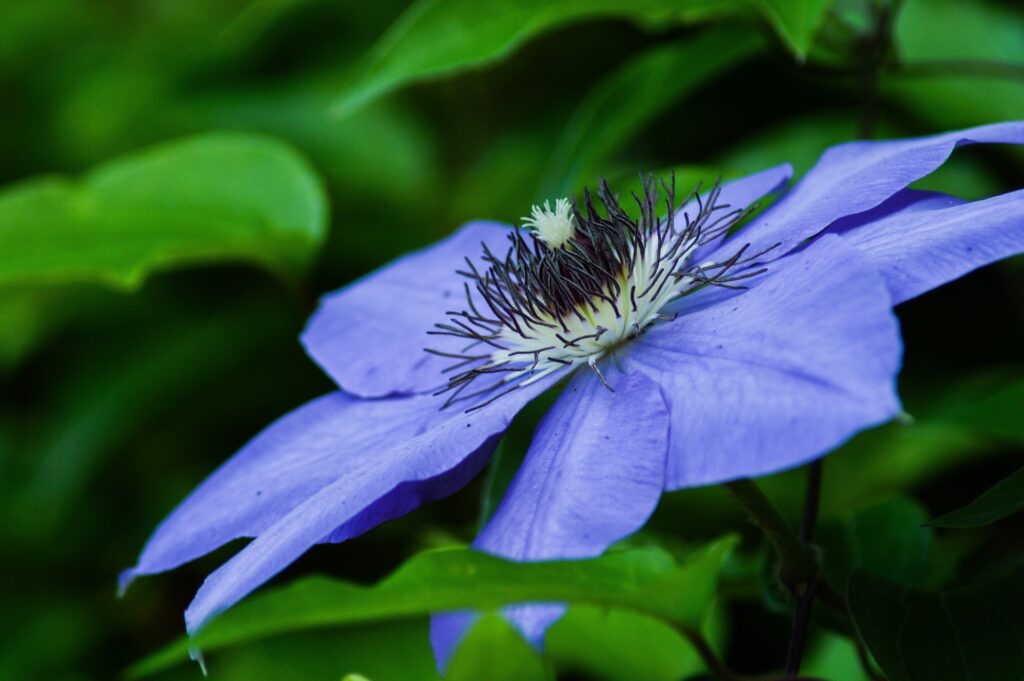
The classic climber, many horticulture fans think of a white flower when a clematis is called to mind, but the sky blue variant can be even more incredible, and totally transform a humble tree, gate or wall – especially when paired with a climbing rose.
15. Bluestar
Botanical Name: Amsonia tabernaemontana

As the name suggests, this is a plant that produces stunning blue star-shaped flowers all through the late spring, and these will gradually fade to a gorgeous yellow as the year draws to a close.
Bluestar has the added bonus of being resistant to both heat and drought, and for being unappetising to deer, allowing you to protect your garden!
16. Salvia
Botanical Name: Salvia
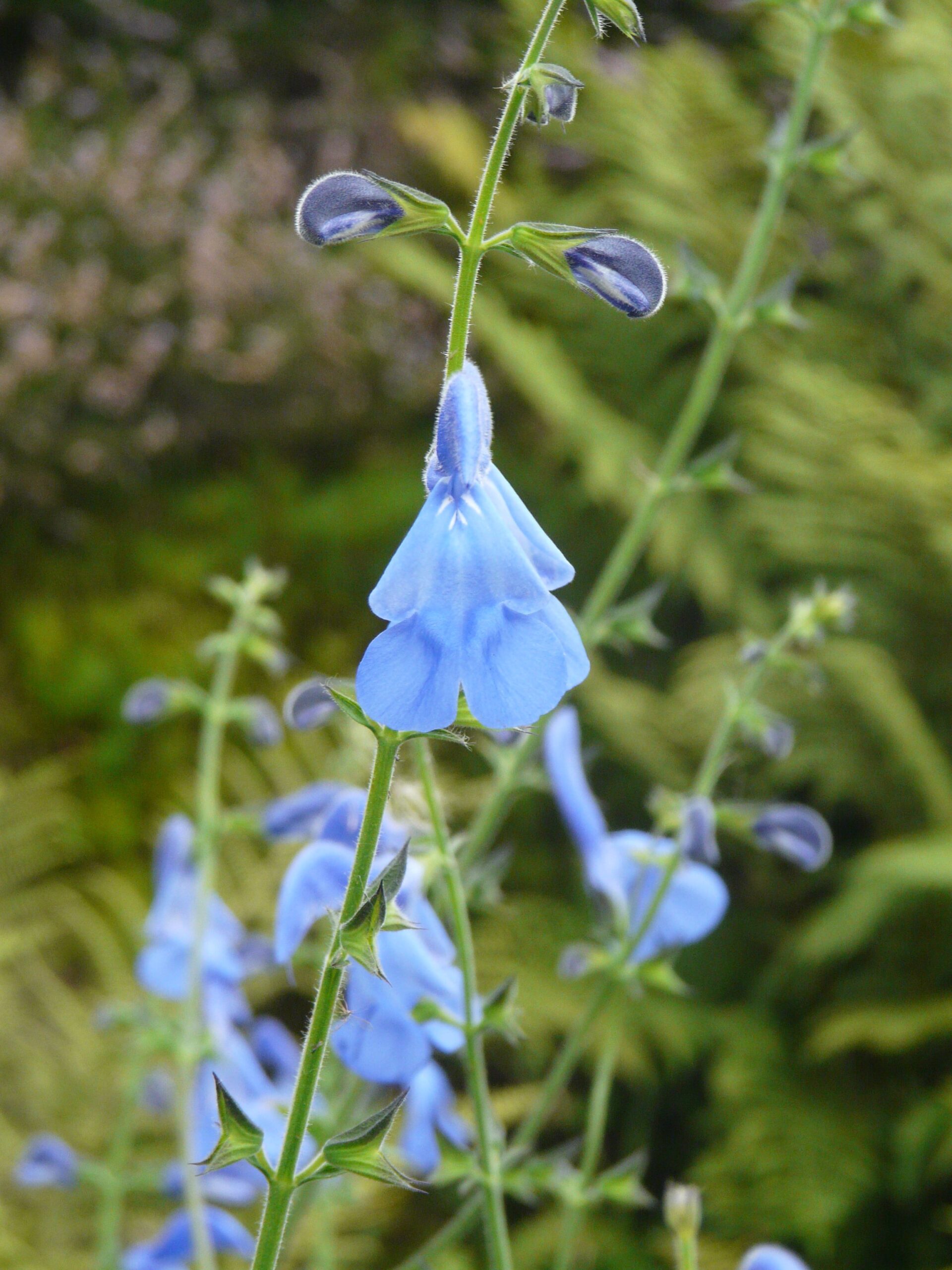
Salvia is a plant that comes in a variety of shades, but Salvia patens and Salvia azurea are the ultimate choices to enjoy that sky-blue shade. Make sure that you have plenty of sunlight to allow your Salvias to thrive – this is a flower that is resistant to heat and drought!
17. Bellflower
Botanical Name: Campanula
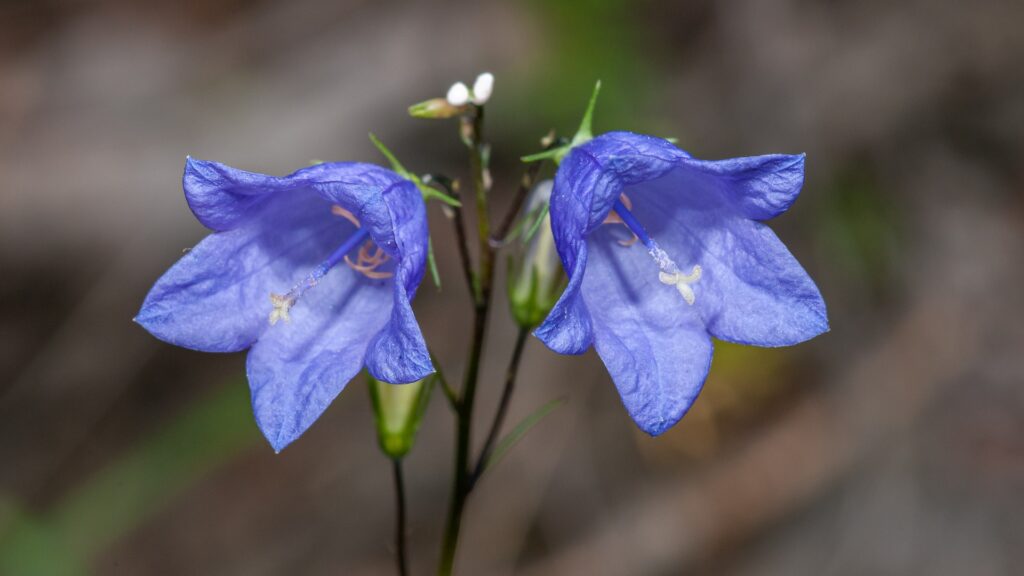
As the name hints, the Bellflower is famous for bell-shaped blossoms, and these can come in a range of shades – with stunning sky blue amongst the most popular! This is a bloom that really comes to life when cut and included in stunning floral arrangements.
18. Morning Glory
Botanical Name: Ipomoea tricolor
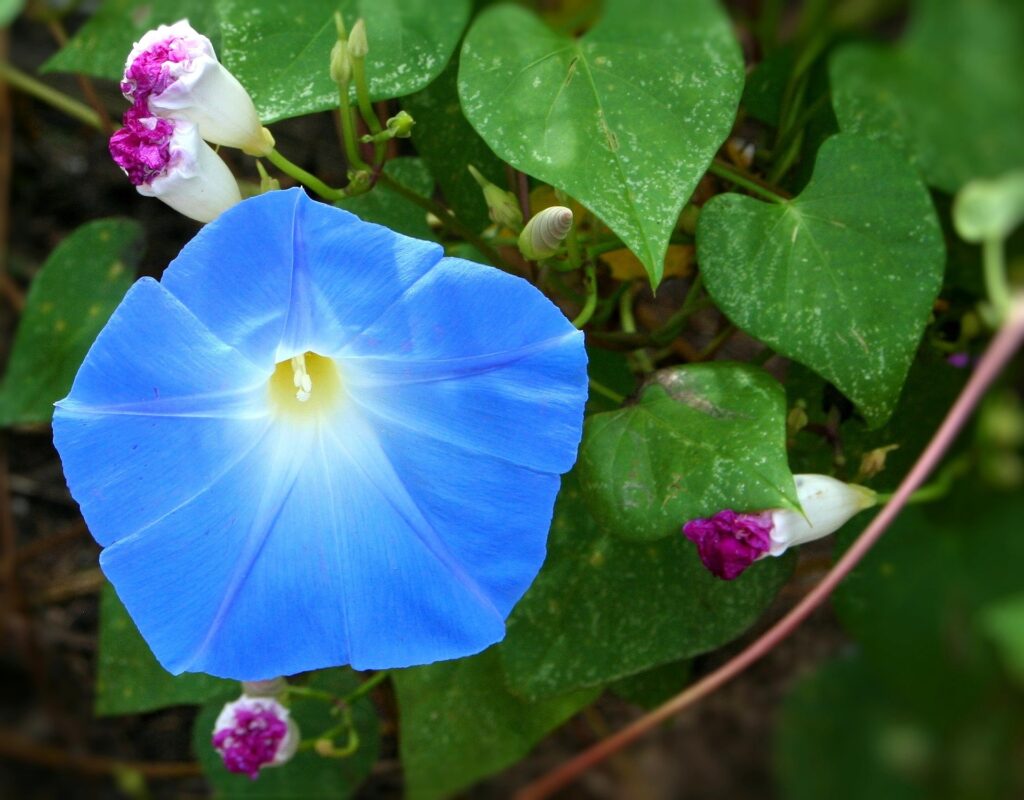
Add a touch of color to your garden even on the gloomiest Monday mornings with a stunning Morning Glory plant, and make the most of the round, sky-blue blooms to cheer up your outdoor space in no time.
Remember, you will need full sun for your flowers to thrive, and will take a few months to flower, so patience is key.
19. Blue False Indigo
Botanical Name: Baptisia australis
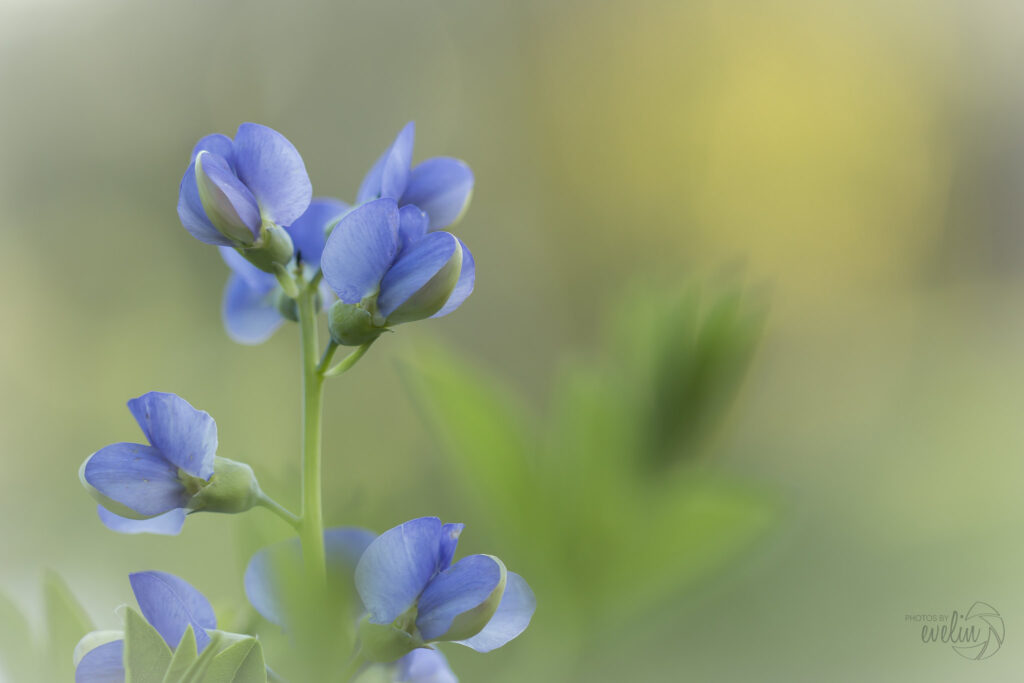
You can’t get a more vibrant blue than this; according to historians, the sheen of the Blue false indigo is so blue that it was once the ingredient of choice for Native Americans creating dye. Shades range from a light sky blue right up to indigo, and this is a showstopping example of color.
20. Harvestbells
Botanical Name: Gentiana saponaria
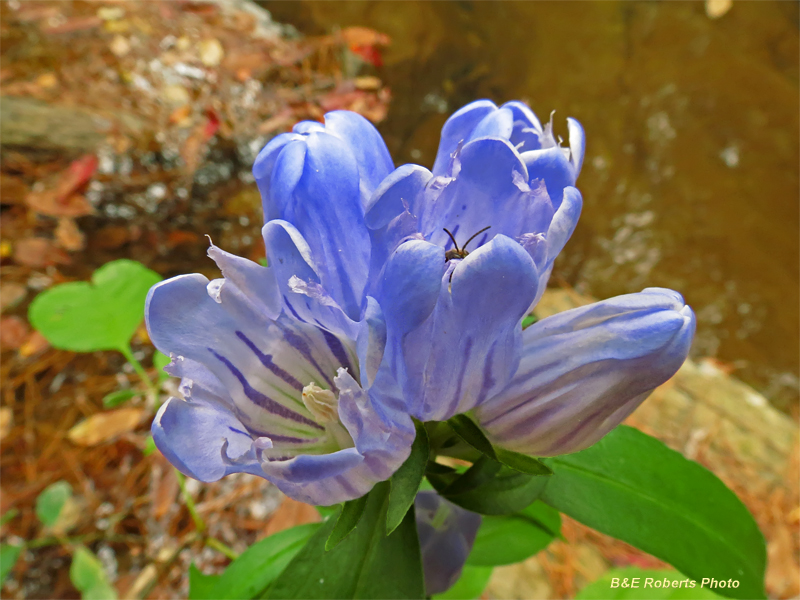
The adorable name is not the only great thing about these flowers, whose petals can range from a vibrant sky blue right up to deeper violet shades. The scent is stunning and has been known to attract wildlife such as birds, bees and butterflies – ideal for transforming your garden into a haven for creatures.
21. Georgia Blue
Botanical Name: Veronica umbrose
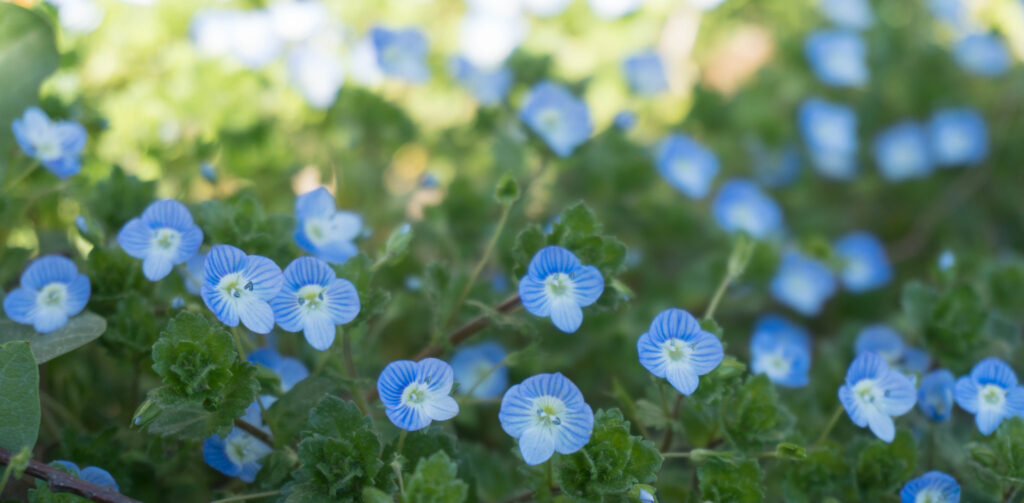
The sky blue petals of the Georgia Blue flowers are like homing beacons to butterflies, who are guaranteed to be attracted to the stunning blooms and bright colors.
As a bonus, this is a plant that requires relatively little maintenance once it is in place, and is versatile enough to adapt to a range of different soil types, locations and weather conditions.
22. Agapanthus
Botanical Name: Agapanthus africanus
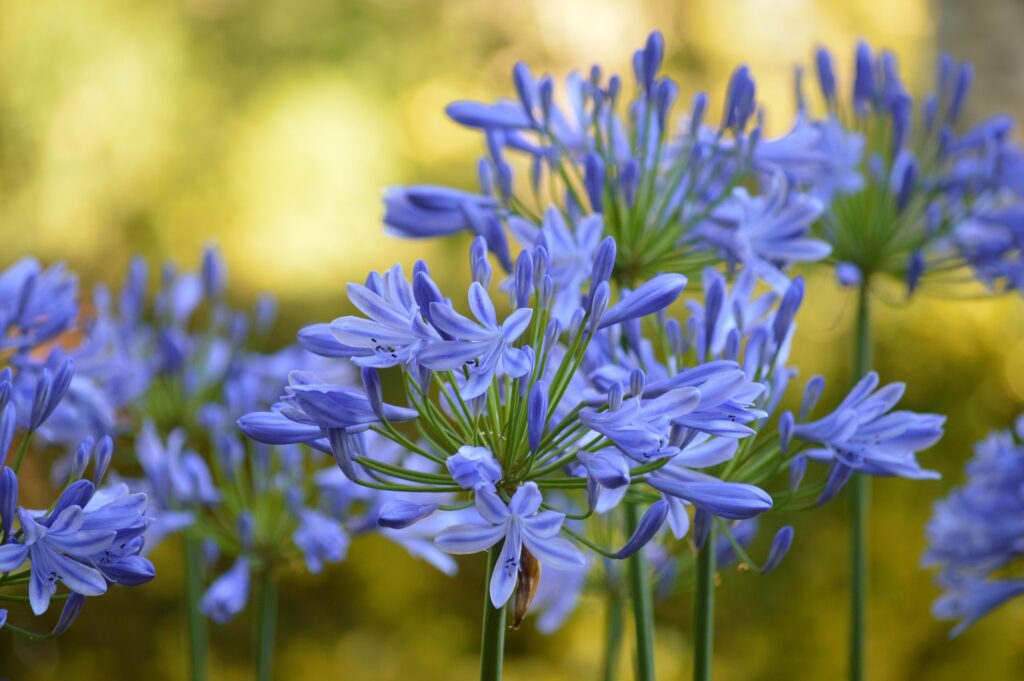
Also known more commonly as “Lily of the Nile”, this is a stunning flower that grows in clusters, boasting stunning blue and white petals above grass-like foliage, and allowing you to enjoy incredible colors throughout the summer – try and keep the somewhat delicate blooms safe and protected during the harsher winter months, as this is not a plant that is a fan of the frost.
23. Blue Mist Shrub
Botanical Name: Caryopteris clandonensis

The name of this amazing plant tells you everything you need to know – by planting Caryopteris clandonensis, you can enjoy an incredible blue mist of beauty and color, ready to bloom just in time for late summer.
As an added bonus you can enjoy bees all throughout the life of the flower – they adore the rich nectar of the blooms.
Final Thoughts
Whether you are a keen gardener, an aspiring horticulturist, or simply interested in expanding your knowledge and understanding of the range of floral wonders available in the world, this is a great topic in which to immerse yourself – there is plenty to learn and discover!
There is no way that we can include every single sky blue flower on our list – and this gives you a chance to do even more research and learn more.
We hope you learned something from this article, here are other articles that you can learn from:
16 Fantastic Mint Flowers (With Pictures)







